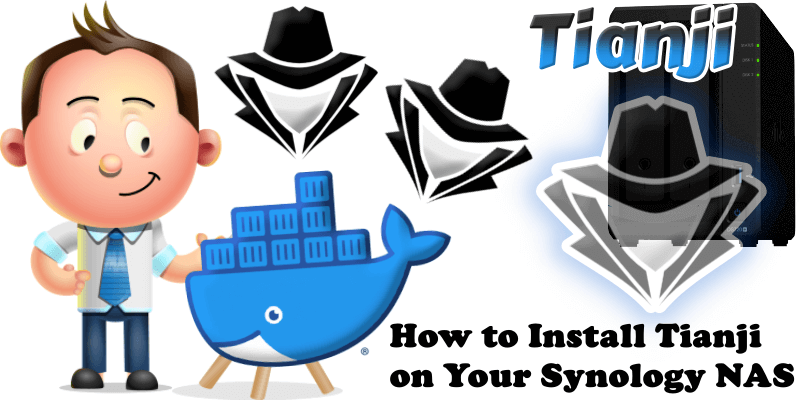
Tianji is an open-source project dedicated to providing robust and efficient solutions for data integration and management. One sentence to summarize: Tianji = Website Analytics + Uptime Monitor + Server Status. You can use Tianji on your Synology NAS as an alternative to Plausible, Umami, Medama, Matomo and Uptime Kuma. In this step by step guide I will show you how to install Tianji on your Synology NAS using Docker & Portainer.
STEP 1
Please Support My work by Making a Donation.
STEP 2
Install Portainer using my step by step guide. If you already have Portainer installed on your Synology NAS, skip this STEP. Attention: Make sure you have installed the latest Portainer version.
STEP 3
Make sure you have a synology.me Wildcard Certificate. Follow my guide to get a Wildcard Certificate. If you already have a synology.me Wildcard certificate, skip this STEP.
STEP 4
Go to Control Panel / Login Portal / Advanced Tab / click Reverse Proxy. Follow the instructions in the image below.
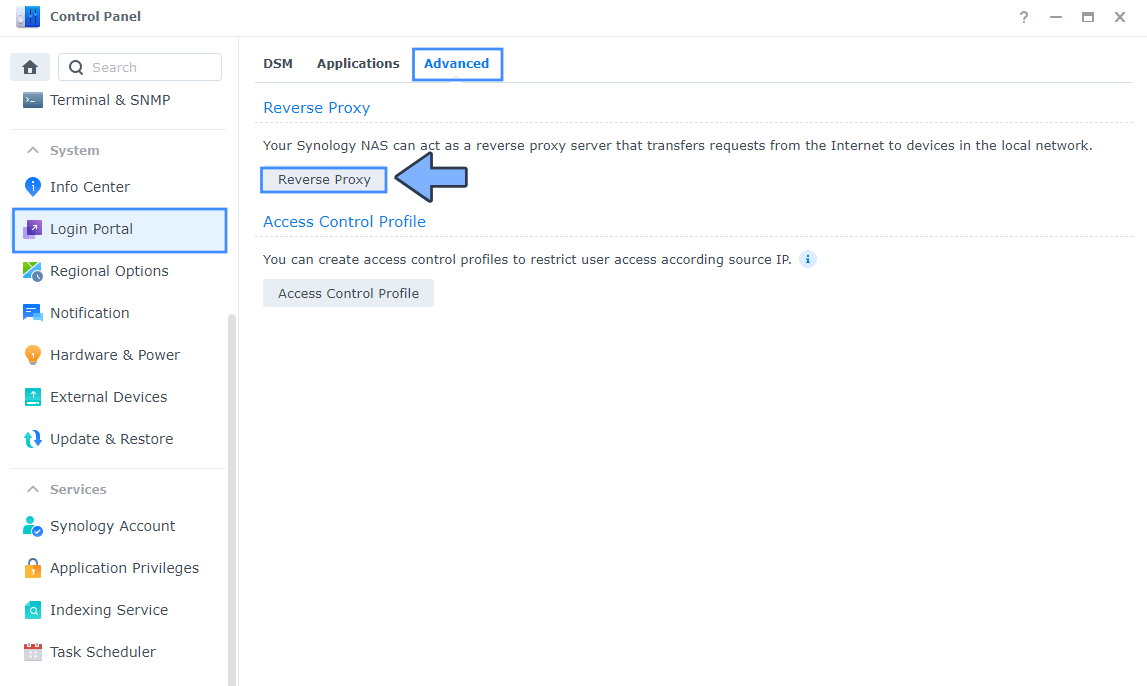
STEP 5
Now click the “Create” button. Follow the instructions in the image below.
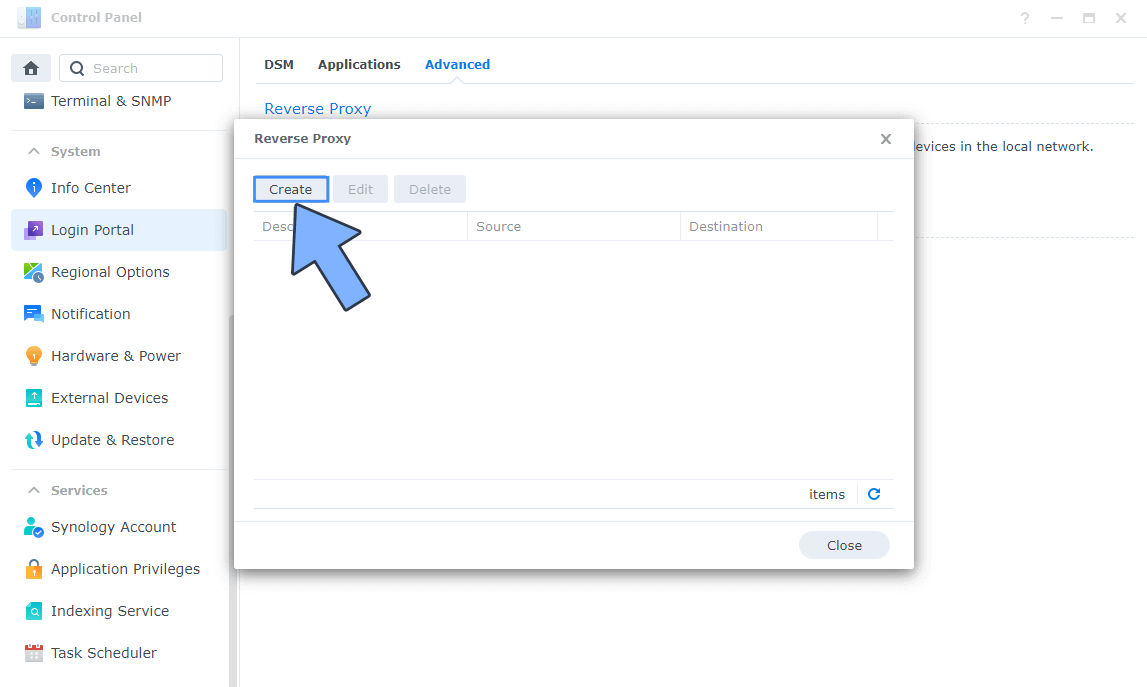
STEP 6
After you click the Create button, the window below will open. Follow the instructions in the image below.
On the General area, set the Reverse Proxy Name description: type in Tianji. After that, add the following instructions:
Source:
Protocol: HTTPS
Hostname: tianji.yourname.synology.me
Port: 443
Check Enable HSTS
Destination:
Protocol: HTTP
Hostname: localhost
Port: 12345
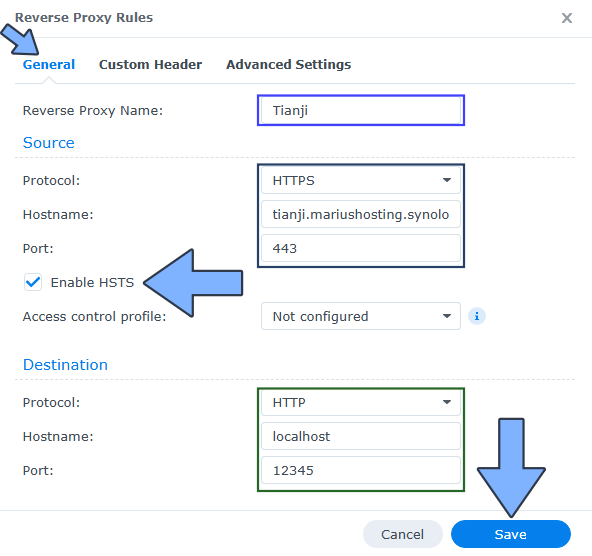
STEP 7
On the Reverse Proxy Rules, click the Custom Header tab. Click Create and then, from the drop-down menu, click WebSocket. After you click on WebSocket, two Header Names and two Values will be automatically added. Click Save. Follow the instructions in the image below.

STEP 8
Go to Control Panel / Network / Connectivity / Check Enable HTTP/2 then click Apply. Follow the instructions in the image below.
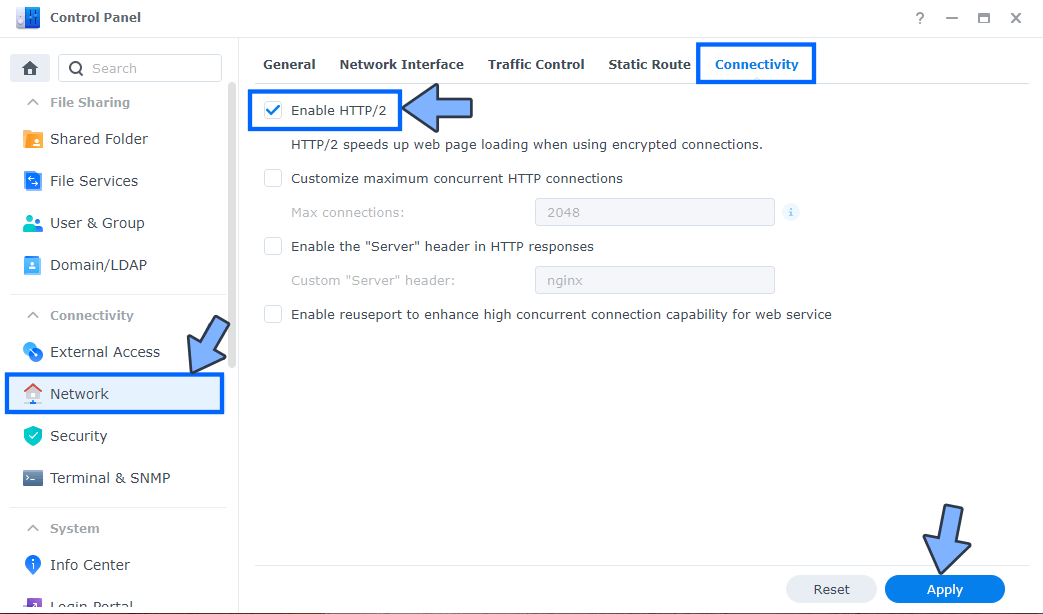
STEP 9
Go to Control Panel / Security / Advanced tab/ Check Enable HTTP Compression then click Apply. Follow the instructions in the image below.
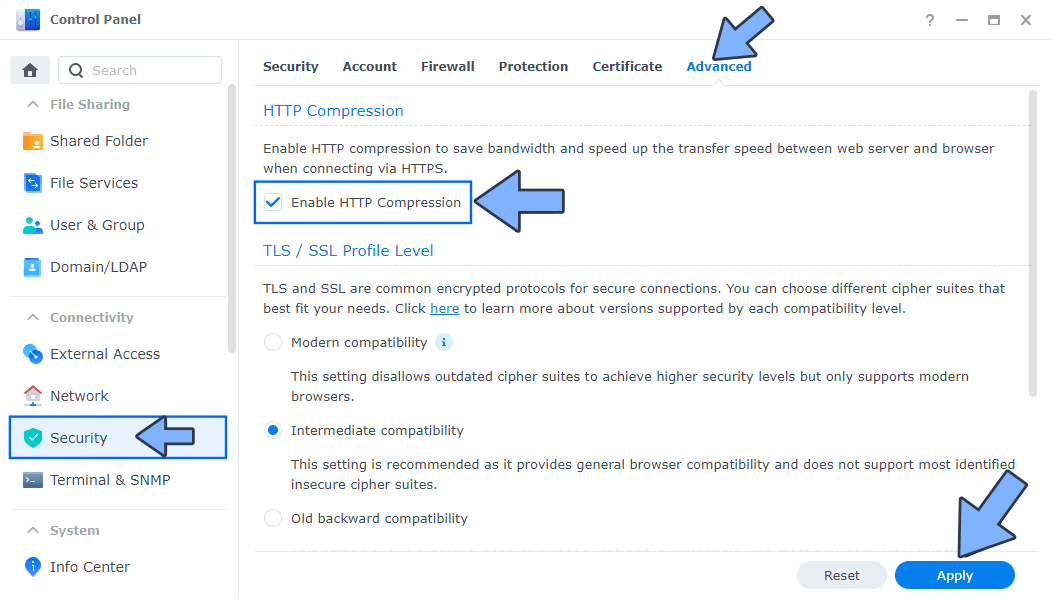
STEP 10
Go to File Station and open the docker folder. Inside the docker folder, create one new folder and name it tianjidb. Follow the instructions in the image below.
Note: Be careful to enter only lowercase, not uppercase letters.
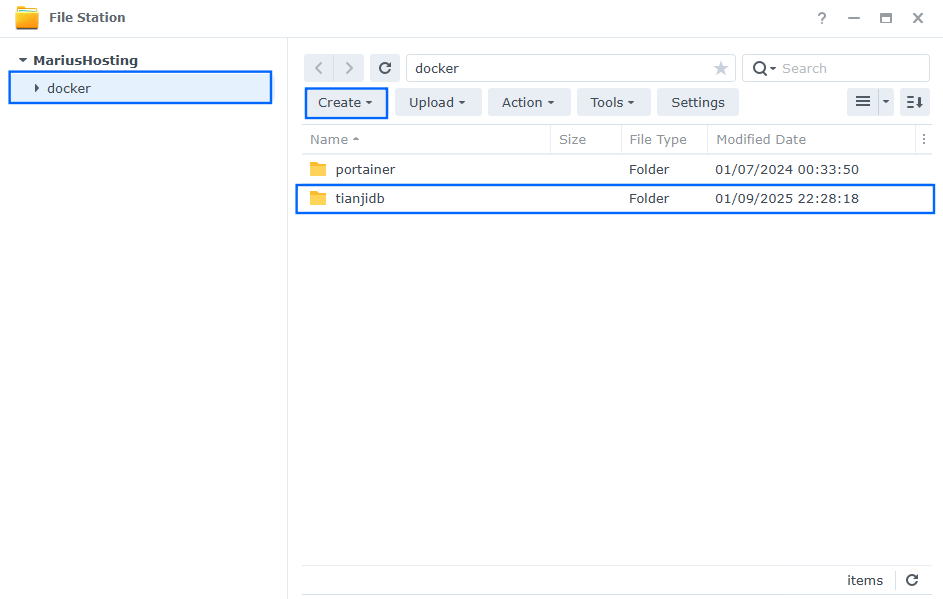
STEP 11
Log into Portainer using your username and password. On the left sidebar in Portainer, click on Home then Live connect. Follow the instructions in the image below.

On the left sidebar in Portainer, click on Stacks then + Add stack. Follow the instructions in the image below.

STEP 12
In the Name field type in tianji. Follow the instructions in the image below.
services:
db:
image: postgres:17
container_name: Tianji-DB
hostname: tianji-db
mem_limit: 1g
cpu_shares: 1024
security_opt:
- no-new-privileges:true
healthcheck:
test: ["CMD", "pg_isready", "-q", "-d", "tianji", "-U", "tianjiuser"]
timeout: 45s
interval: 10s
retries: 10
volumes:
- /volume1/docker/tianjidb:/var/lib/postgresql/data:rw
environment:
POSTGRES_DB: tianji
POSTGRES_USER: tianjiuser
POSTGRES_PASSWORD: tianjipass
restart: on-failure:5
tianji:
image: moonrailgun/tianji
container_name: Tianji
healthcheck:
test: ["CMD-SHELL", "nc -z 127.0.0.1 12345 || exit 1"]
interval: 10s
timeout: 5s
retries: 3
start_period: 90s
ports:
- 12345:12345
environment:
DATABASE_URL: postgresql://tianjiuser:tianjipass@tianji-db:5432/tianji
JWT_SECRET: dOxZYTTZgXKMHkqLBIQVImayQXAVWdzGBPuFJKggzcgvgPJPXpWzqzKaUOIOGGIr
ALLOW_REGISTER: false
ALLOW_OPENAPI: true
OPENAI_API_KEY: Your-OpenAI-APIKEY #NOT mandatory to add.
depends_on:
- db
restart: on-failure:5
Note: Before you paste the code above in the Web editor area below, change the value for JWT_SECRET. (Generate your own Random 64 length JWT_SECRET.)
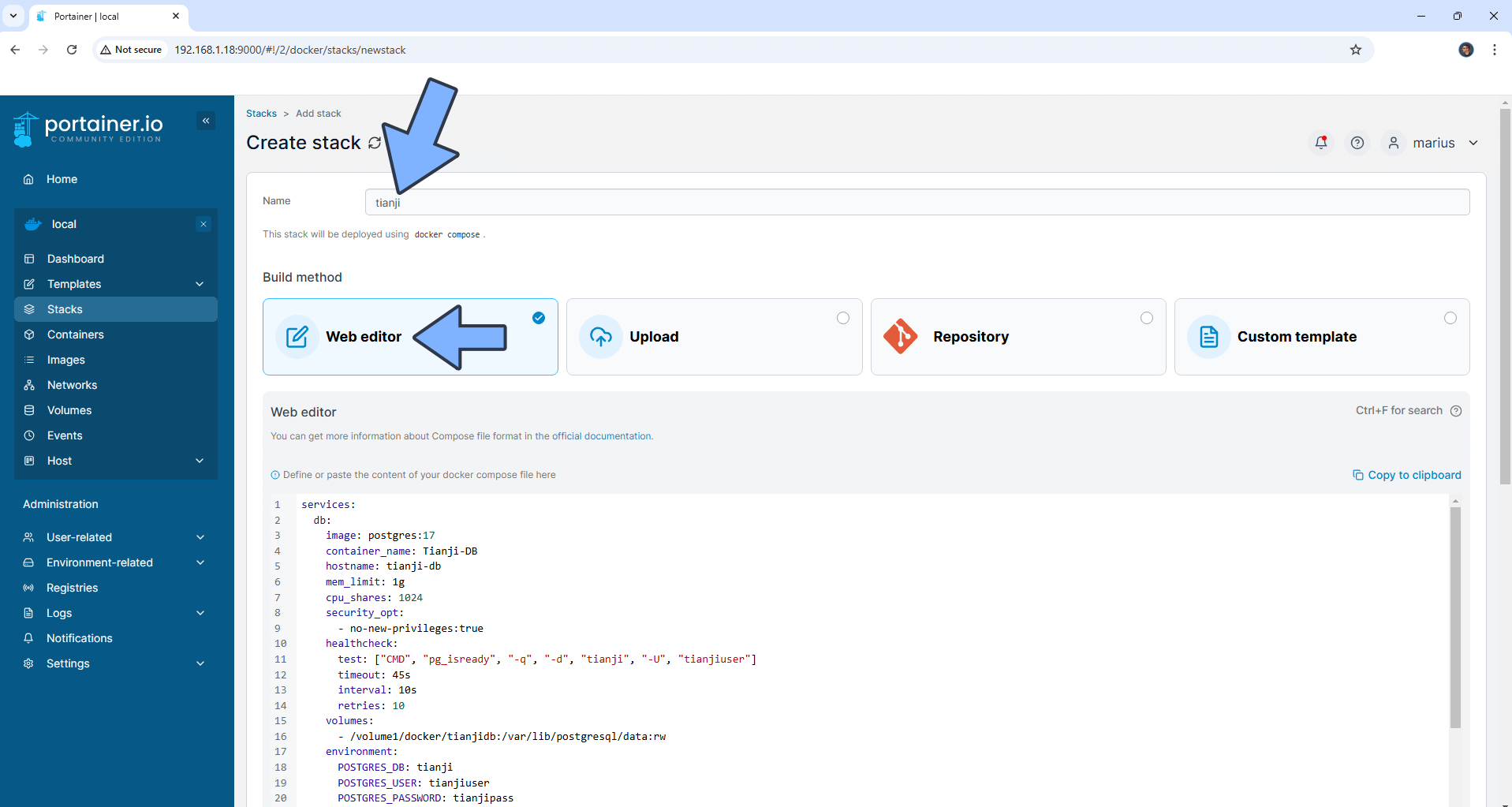
STEP 13
Scroll down on the page until you see a button named Deploy the stack. Click on it. Follow the instructions in the image below. The installation process can take up to a few minutes. It will depend on your Internet speed connection.
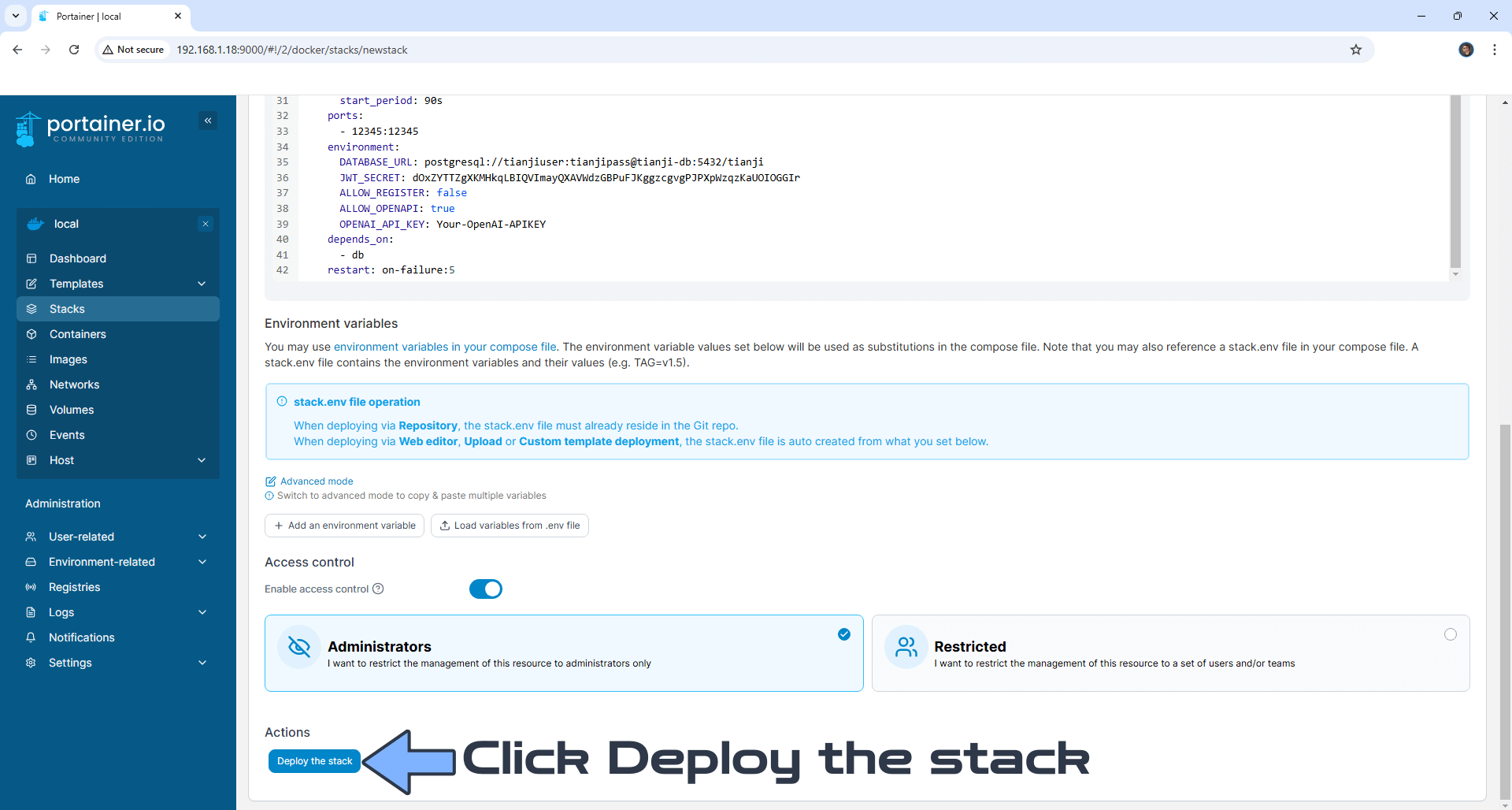
STEP 14
If everything goes right, you will see the following message at the top right of your screen: “Success Stack successfully deployed“.

STEP 15
🟢Please Support My work by Making a Donation. Almost 99,9% of the people that install something using my guides forget to support my work, or just ignore STEP 1. I’ve been very honest about this aspect of my work since the beginning: I don’t run any ADS, I don’t require subscriptions, paid or otherwise, I don’t collect IPs, emails, and I don’t have any referral links from Amazon or other merchants. I also don’t have any POP-UPs or COOKIES. I have repeatedly been told over the years how much I have contributed to the community. It’s something I love doing and have been honest about my passion since the beginning. But I also Need The Community to Support me Back to be able to continue doing this work.
STEP 16
Now open your browser and type in your HTTPS address like this https://tianji.yourname.synology.me/login In my case it’s https://tianji.mariushosting.synology.me/login If everything goes right, you will see the Tianji login page. Type in the default Username and Password, then click Login. Follow the instructions in the image below.
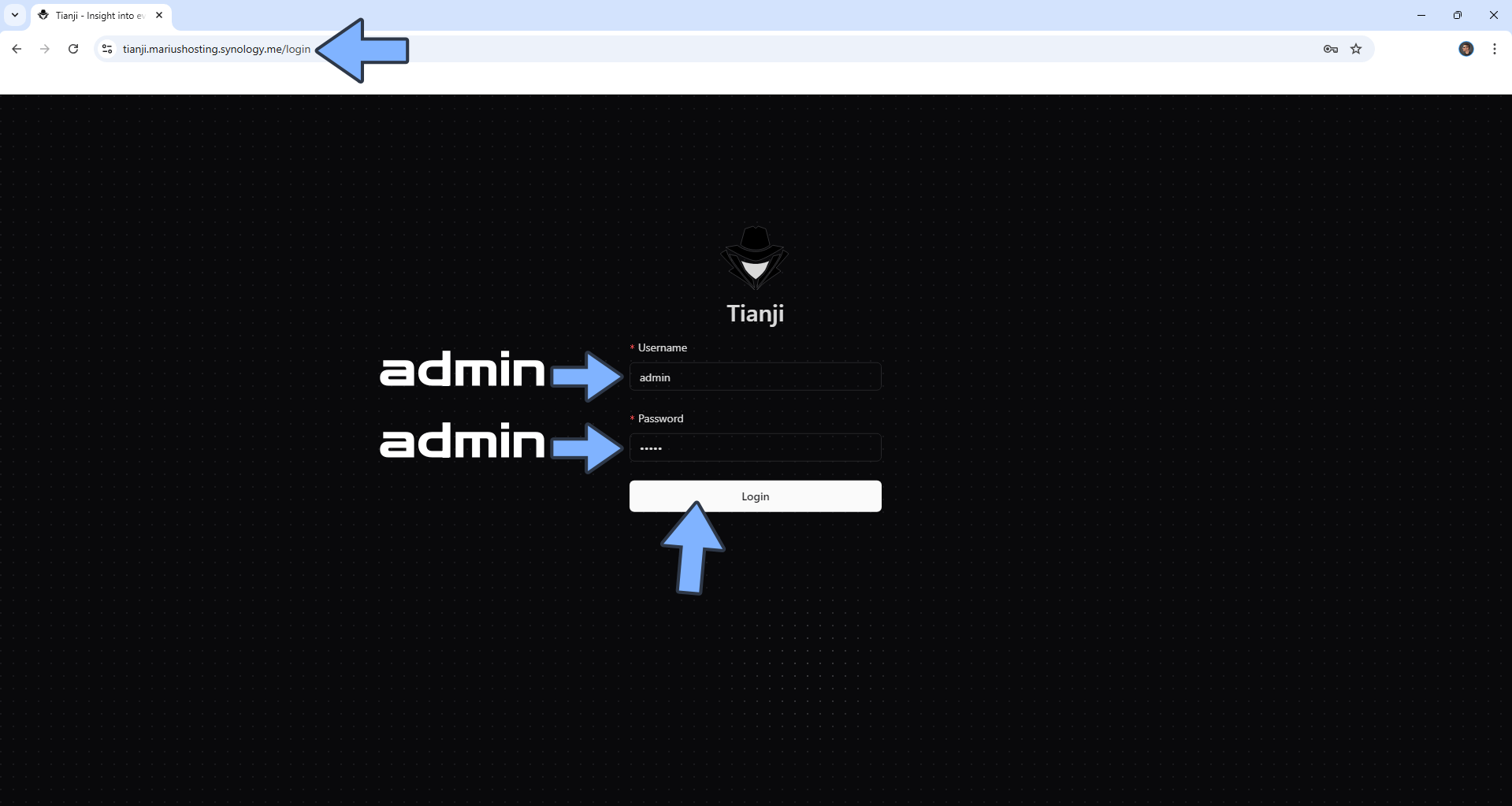
STEP 17
Change the default password. On the left sidebar, at the bottom, click on the 3 vertical dots, then Profile. Click Change Password. Follow the instructions in the image below.
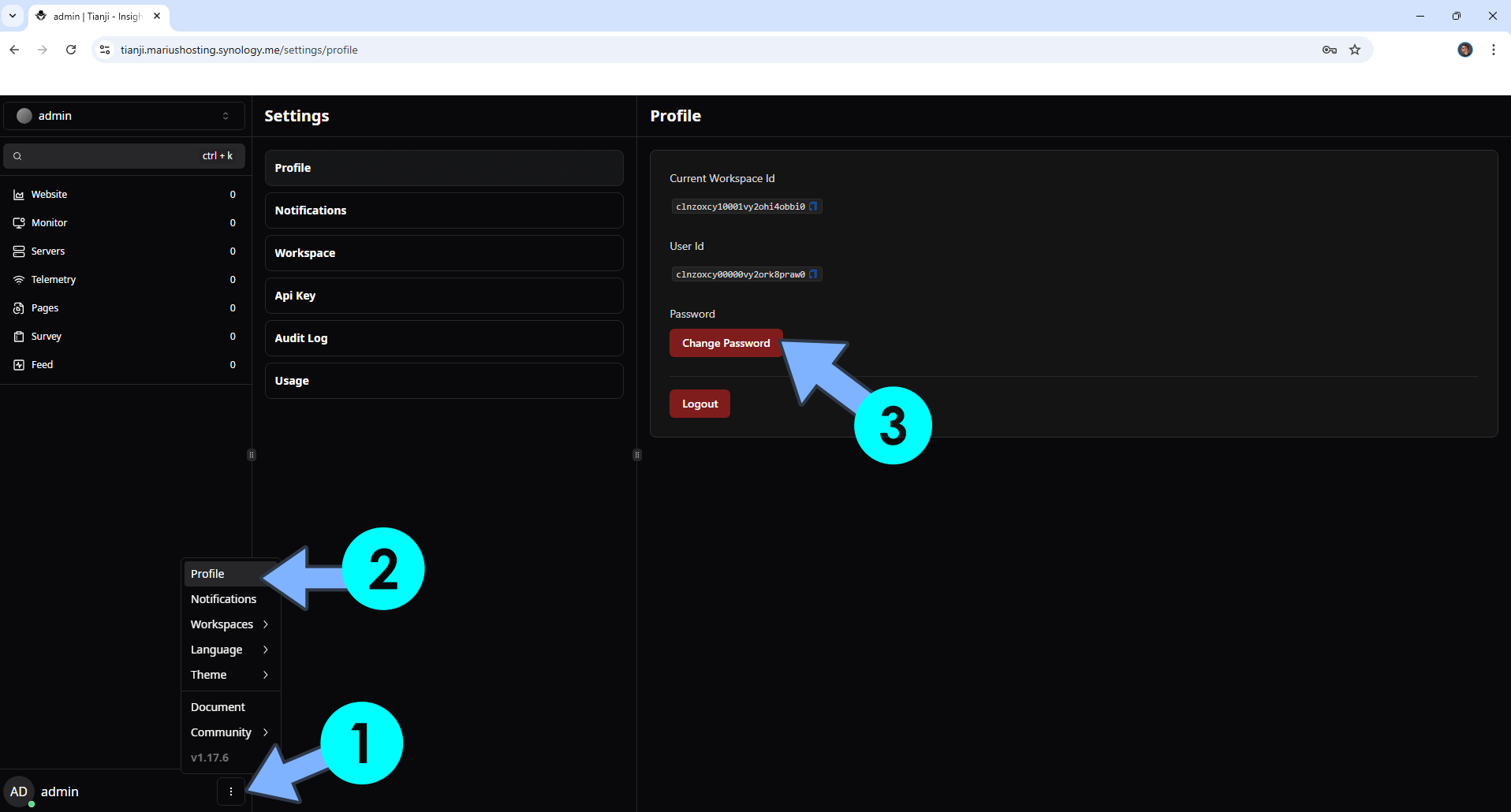
STEP 18
In the Old Password area, type in admin, then write down your new password. Click Submit. Follow the instructions in the image below.
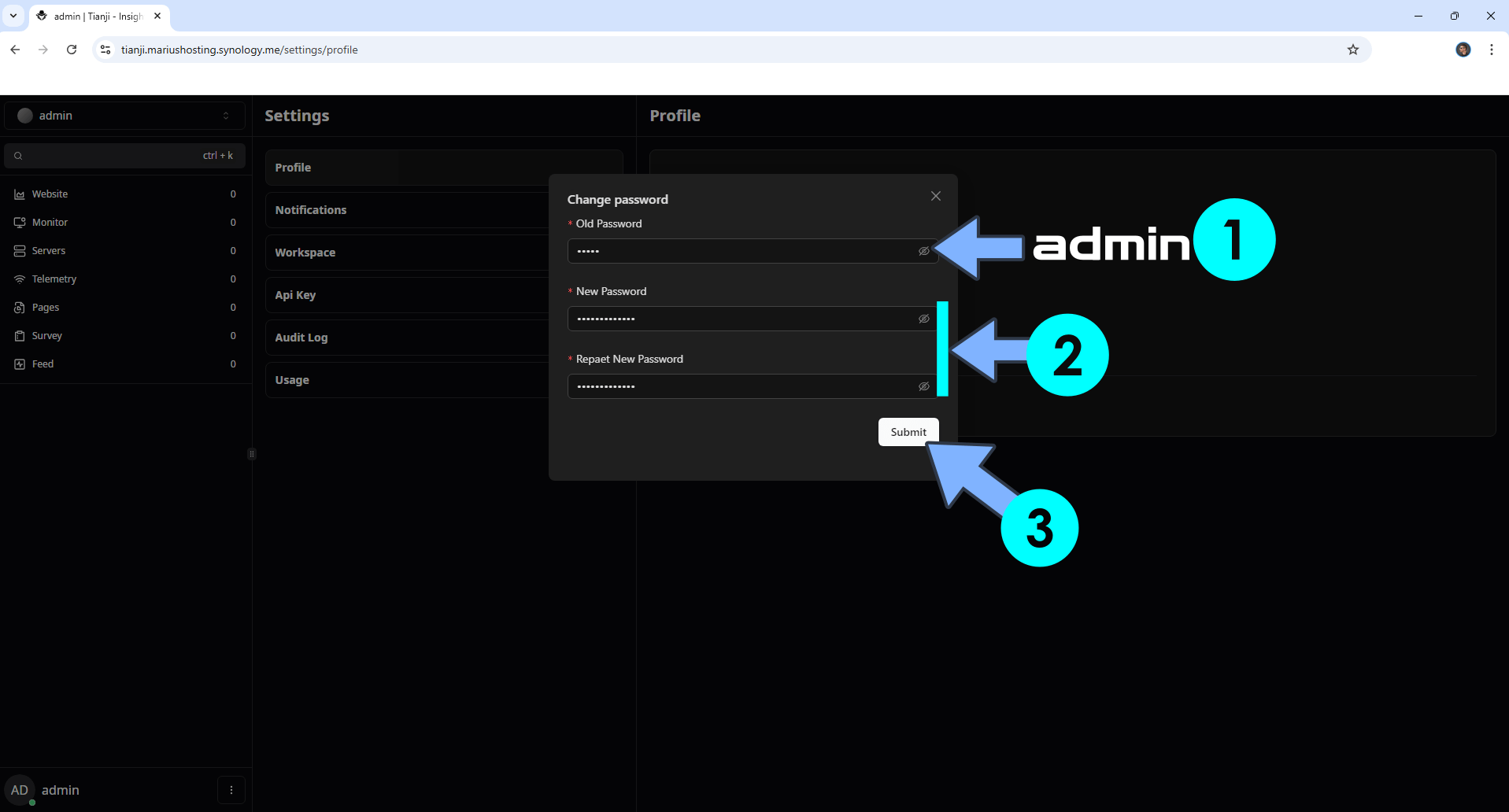
STEP 19
After you click Submit at STEP 18, you will be prompted to log in using your new password. Follow the instructions in the image below.
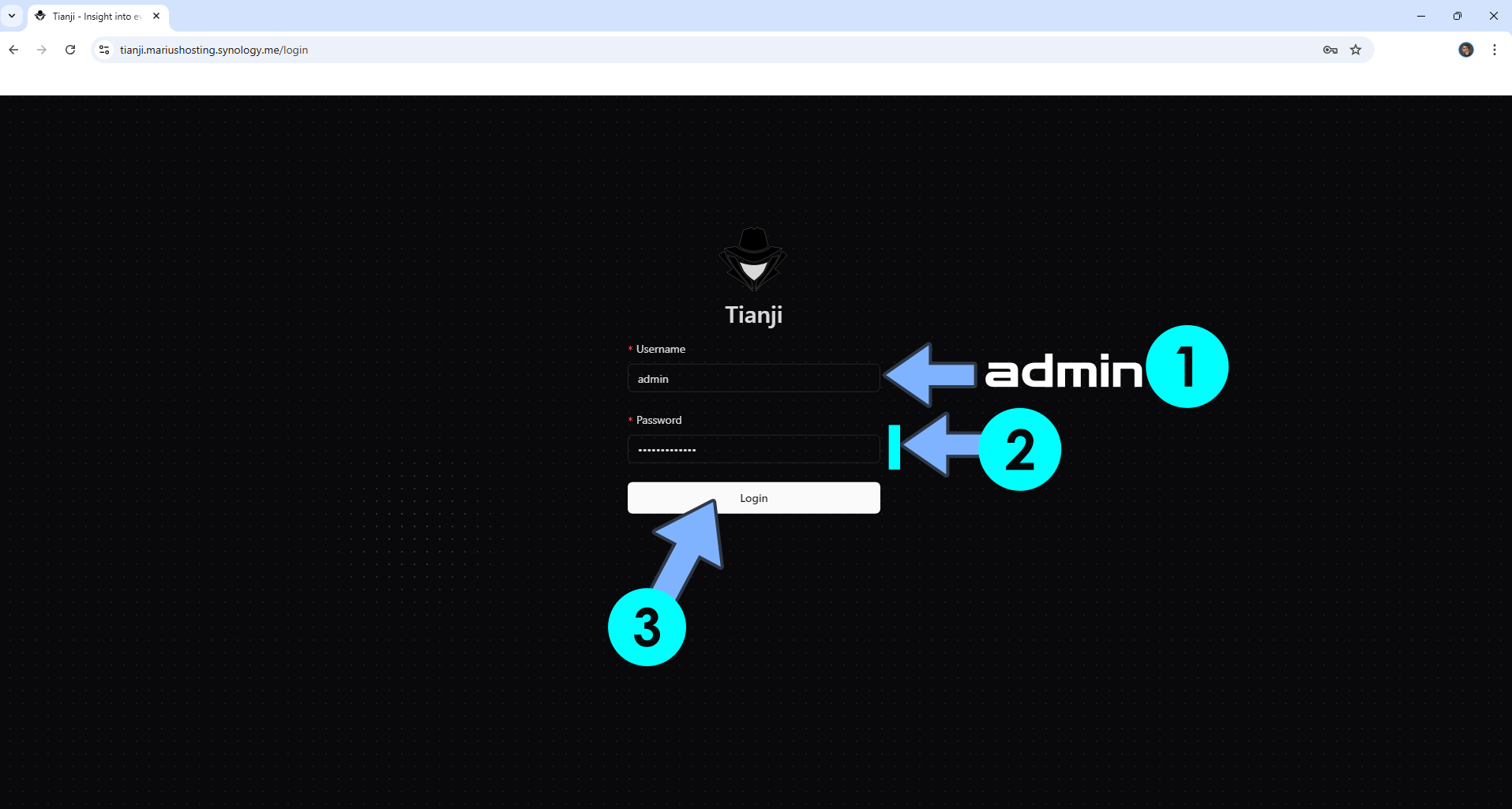
STEP 20
Analyze your first website. On the left sidebar, click Website then the + icon. In the apposite fields, type in the website name and the domain address, then click Create. Follow the instructions in the image below.
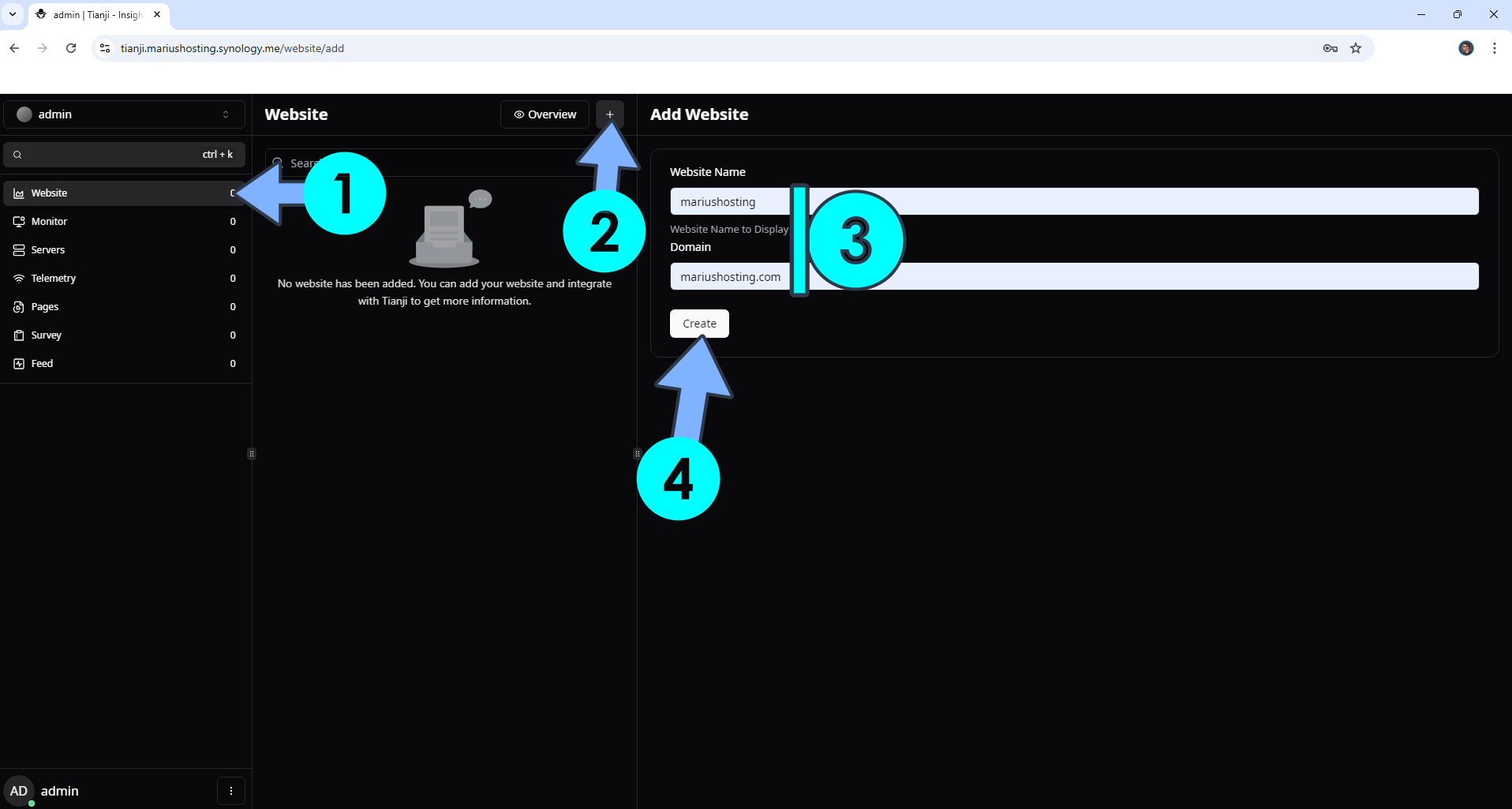
STEP 21
Copy your Auto-Generated code. Follow the instructions in the image below.
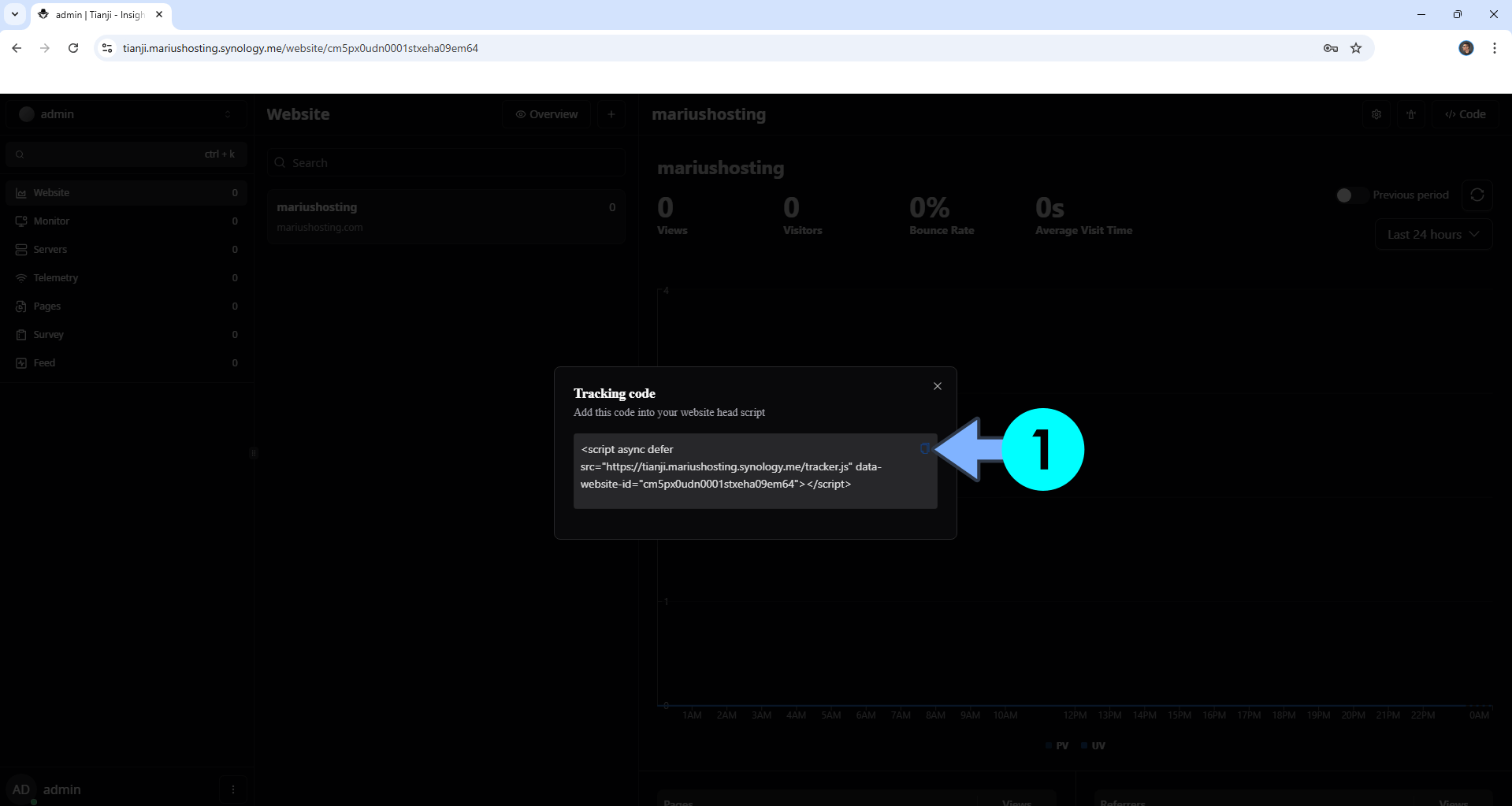
STEP 22
Paste your personal Tianji Tracking code script that you have automatically generated at STEP 21 on your website between the <head> and </head> tags of your site, then update your file. For example, I have a WordPress website hosted on a Synology NAS. If you have a WordPress website hosted elsewhere, know that the process is the same. Log into your WordPress admin Dashboard, click on the left sidebar on “Theme File Editor“, under Appearance. Select your theme then search for the header.php file. Paste your personal Tianji Tracking code script in the header.php file between the <head> and </head> tags of your site, then update your file. Follow the instructions in the image below.
Note: You can add multiple websites via the Tianji Dashboard later.
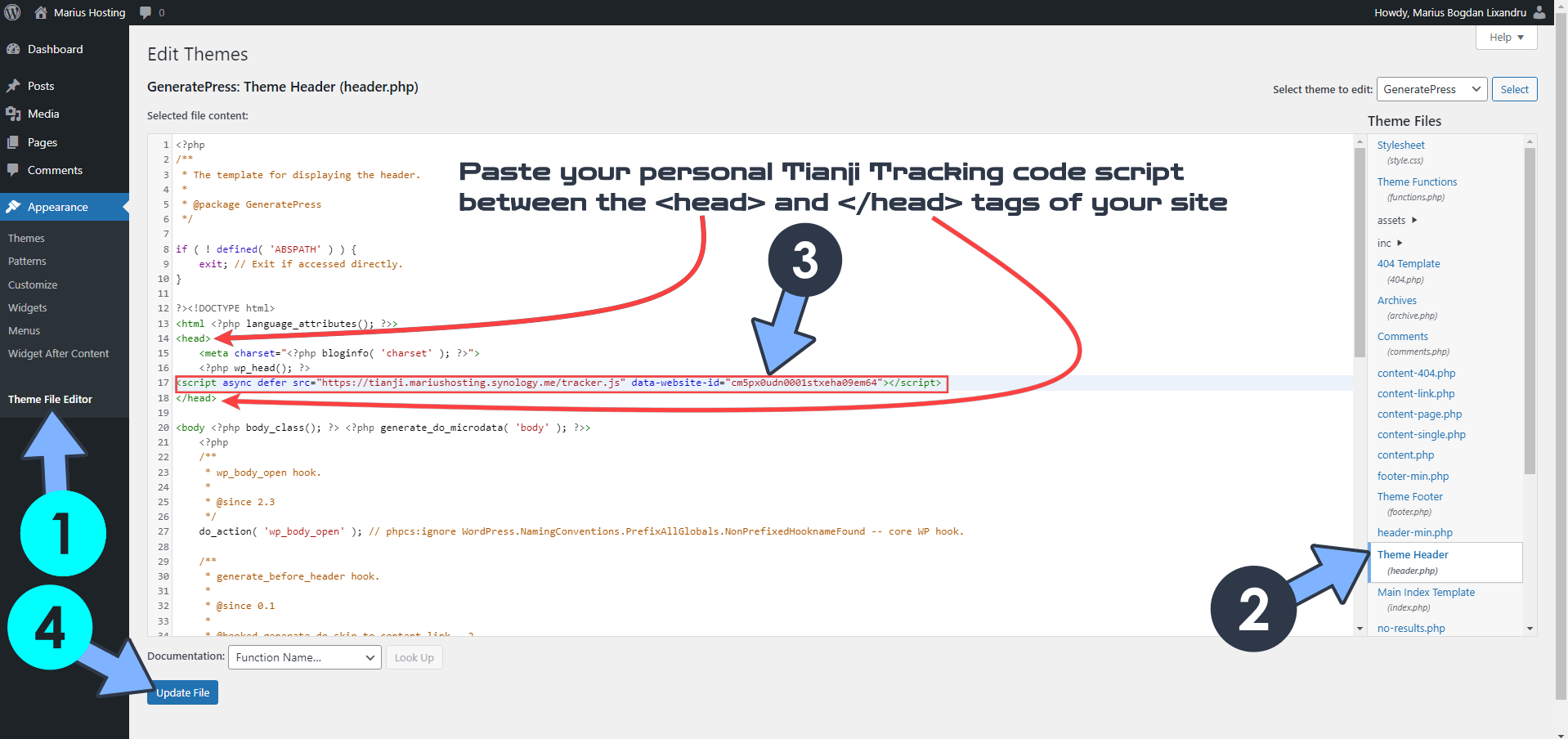
STEP 23
Go back to your Tianji synology.me DDNS URL and start looking at the stats! After the Tianji Tracking code script is added to your website, Tianji will start to collect Real-Time analytics of your website. My blog doesn’t have any TRACKING CODE on it. I just installed Tianji to show you how it works and how easily you can implement it on your website. I have already uninstalled it. Don’t forget to go back to STEP 1. I have worked hard for this guide so you can enjoy it.
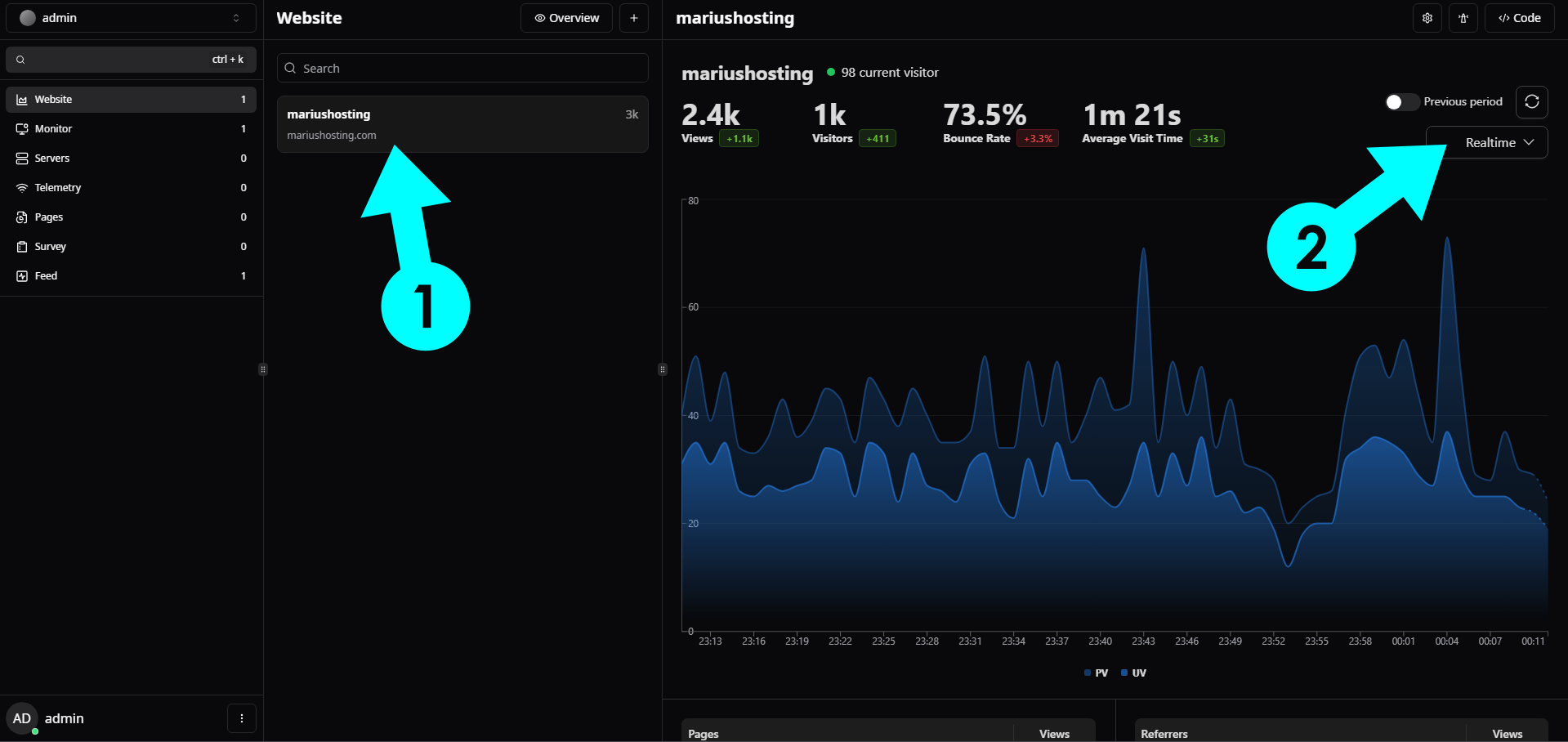
STEP 24
Monitor your first website. On the left sidebar, click Monitor then the + Add icon. In the apposite fields, type in the website name and the domain address, then click Create. Follow the instructions in the image below.
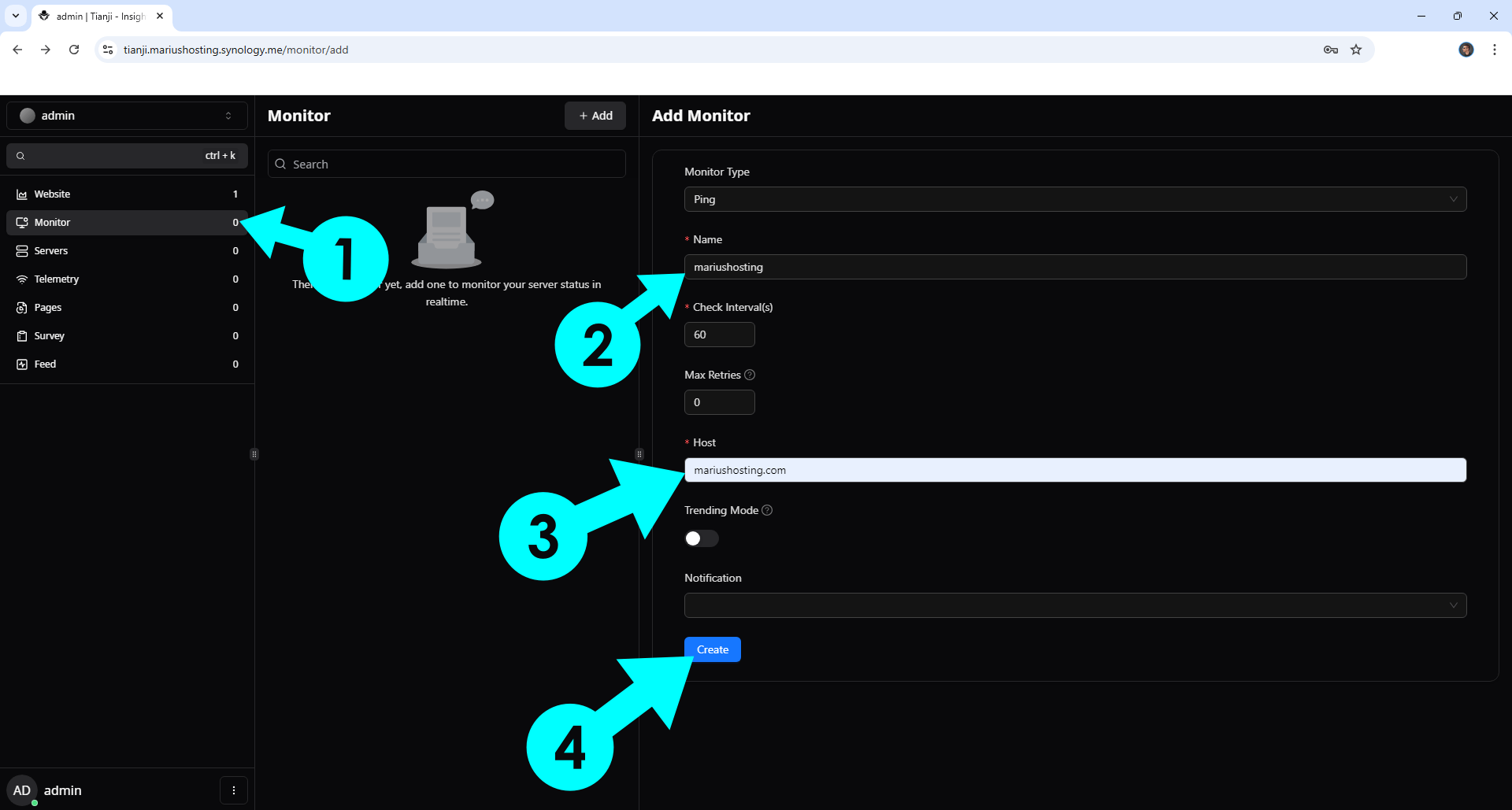
STEP 25
Be the first who knows that your website is down. Reliable monitoring warns you before any significant troubles and saves you money. Tianji monitors your website constantly. Monitoring uptime for HTTP(s) / TCP / Ping. Fancy, Reactive, Fast UI/UX. Notifications via Webhook, Telegram, Discord and email (SMTP).
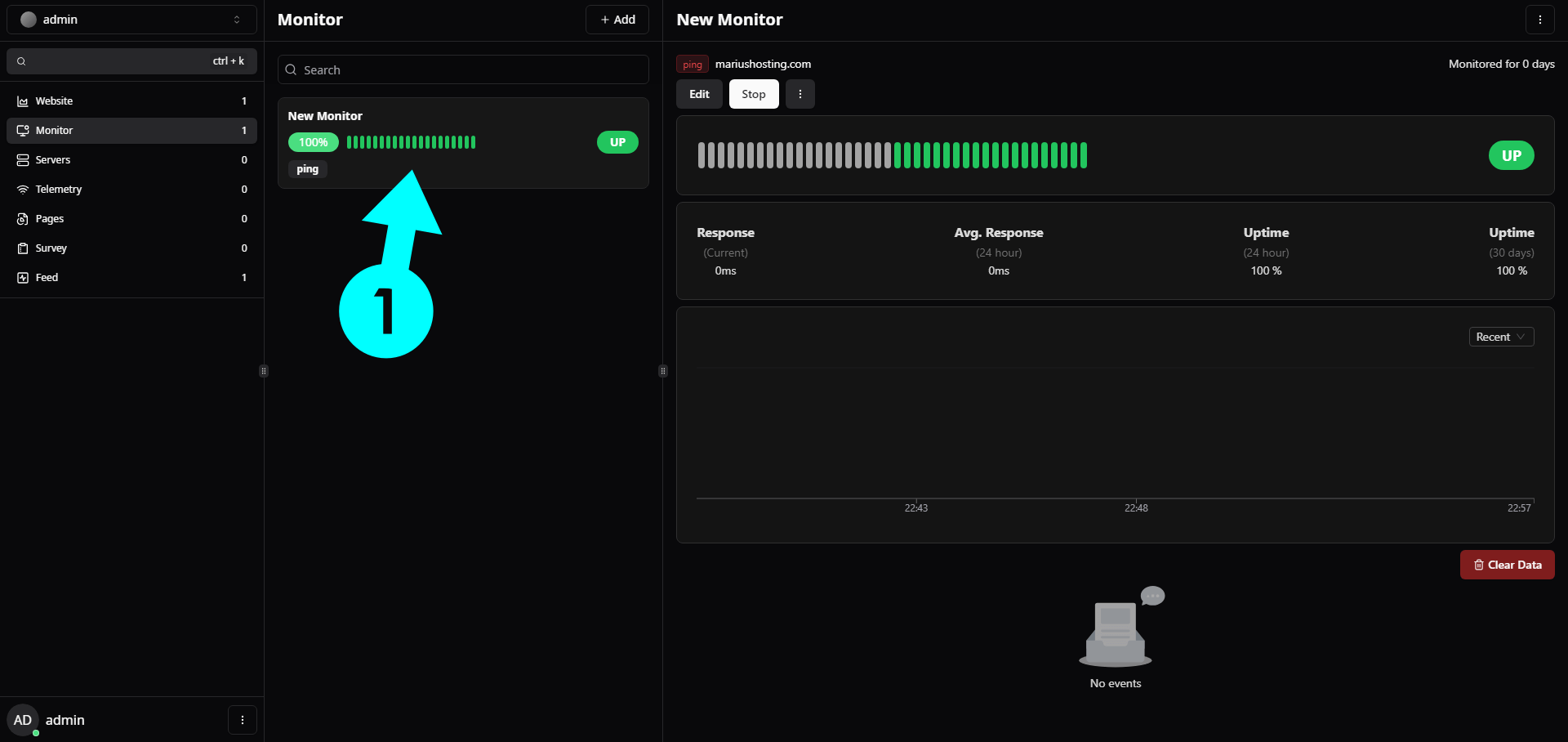
STEP 26
If you want to allow user registration in Tianji, just change the following line in the compose at STEP 12:
ALLOW_REGISTER: falsewith the following one:
ALLOW_REGISTER: trueClick update the stack to update the settings. From this point on, any user who will try to register a new account at https://tianji.yourname.synology.me/register will be able to do it.
Enjoy Tianji!
If you encounter issues by using this container, make sure to check out the Common Docker issues article.
Note: Can I run Docker on my Synology NAS? See the supported models.
Note: How to Back Up Docker Containers on your Synology NAS.
Note: Find out how to update the Tianji container with the latest image.
Note: How to Free Disk Space on Your NAS if You Run Docker.
Note: How to Schedule Start & Stop For Docker Containers.
Note: How to Activate Email Notifications.
Note: How to Add Access Control Profile on Your NAS.
Note: How to Change Docker Containers Restart Policy.
Note: How to Use Docker Containers With VPN.
Note: Convert Docker Run Into Docker Compose.
Note: How to Clean Docker.
Note: How to Clean Docker Automatically.
Note: Best Practices When Using Docker and DDNS.
Note: Some Docker Containers Need WebSocket.
Note: Find out the Best NAS Models For Docker.
This post was updated on Monday / December 1st, 2025 at 12:05 AM
